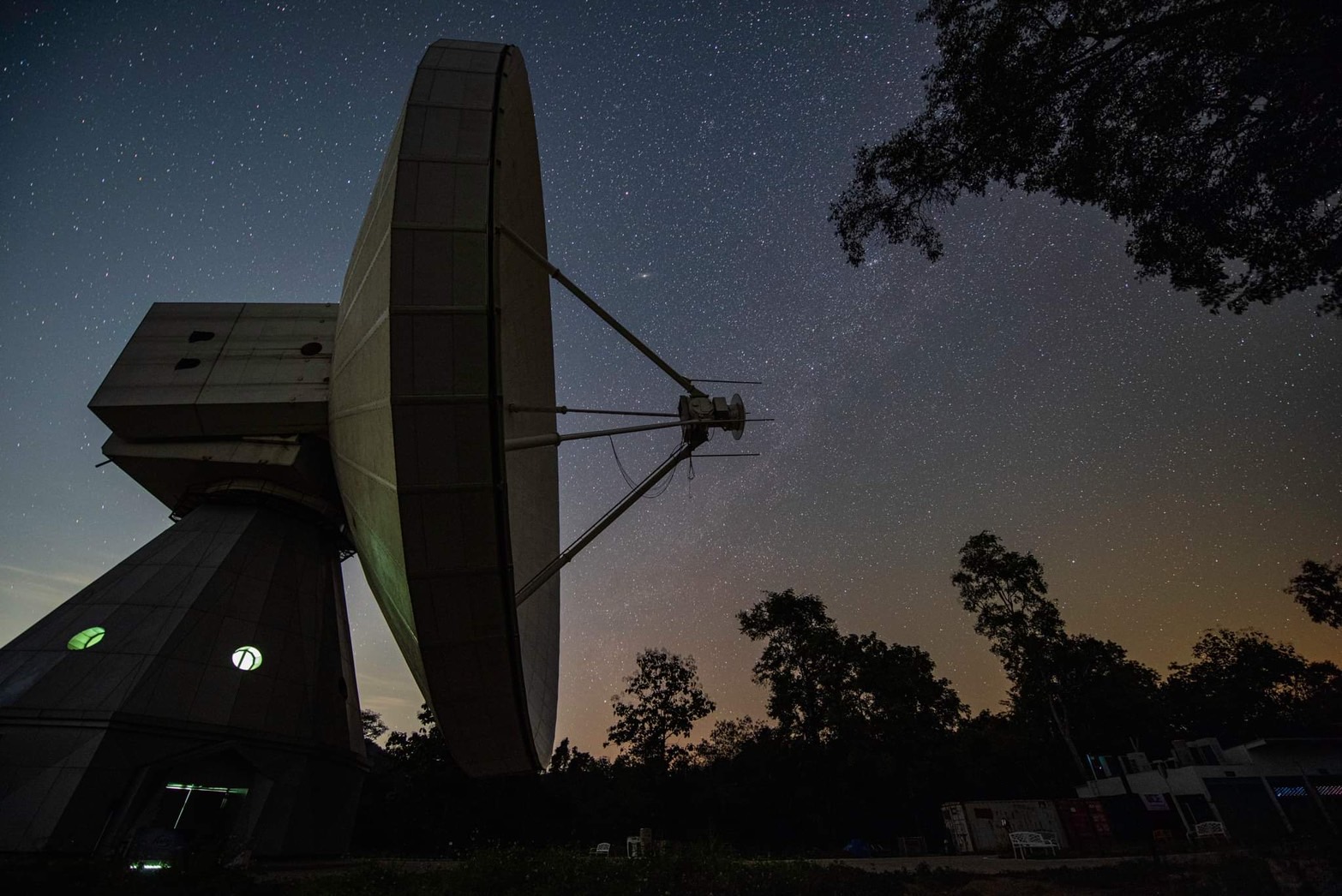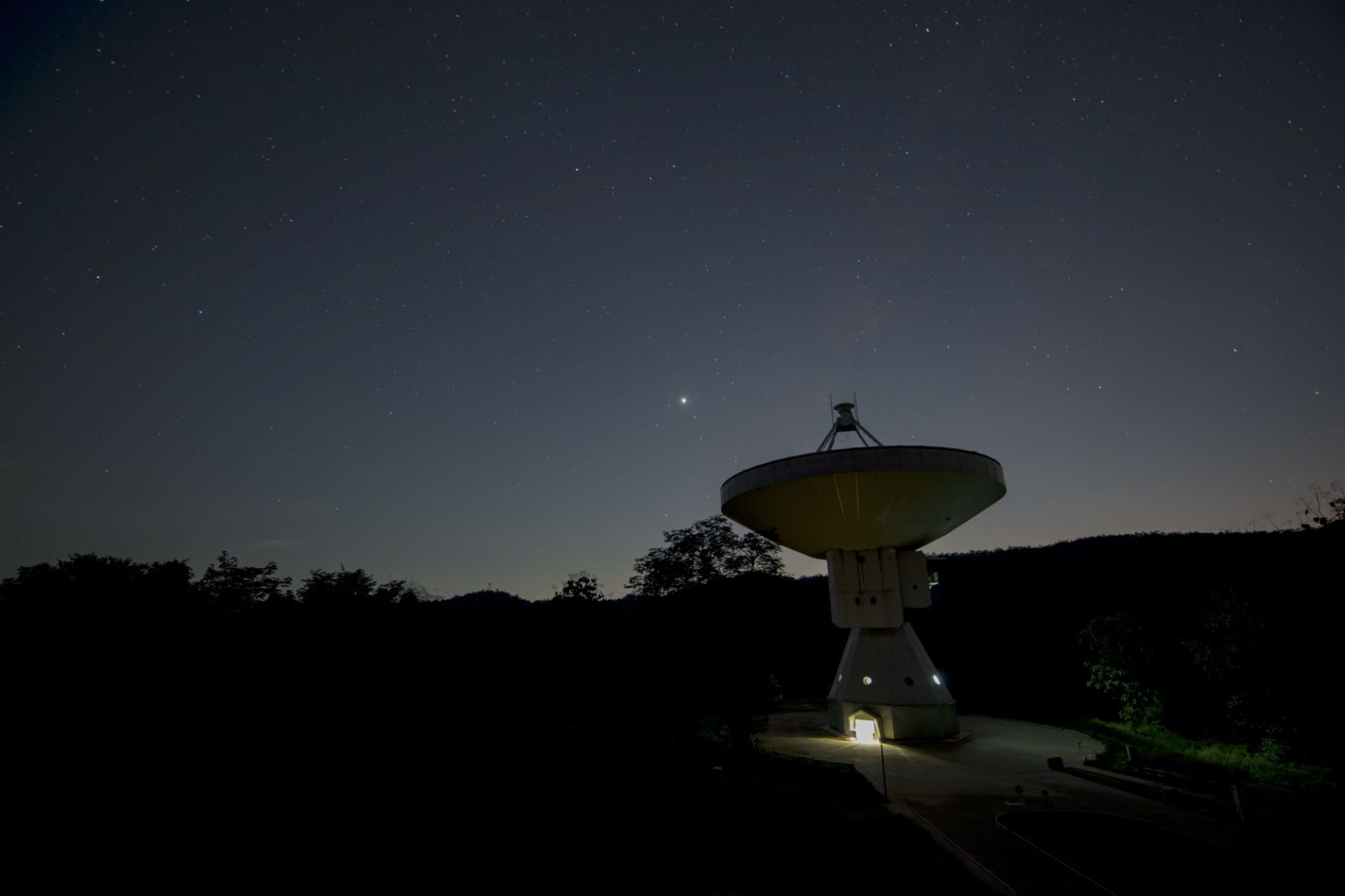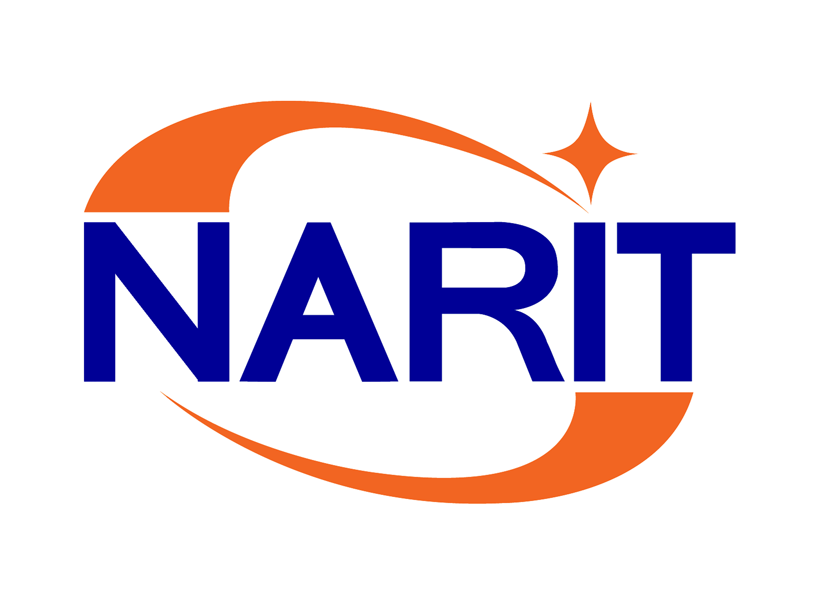The Radio Astrophysics Research group at NARIT explores the life of stars and galaxies both in observations and theories. In the observations, we mainly utilize radio telescopes as single-dish and Very-Long-Baseline-Interferometry (VLBI) ways to address the wide-variety research objectives in world-wide collaborations. This is also a base ground to achieve multi-wavelength studies particularly with optical/infrared facilities as essential as in the multi-messenger era. These activities have been the solid basis to drive forward a national flagship project at NARIT, Thai National Radio Astronomy Observatory (TNRO), via launching science operations of the 40-m Thai National Radio Telescope (TNRT) and the 13-m VLBI Global Observing System (VGOS) radio station. The key sciences potentially achievable and polished up with the 40-m TNRT and the future collaboration within framework of VLBI were published as the white paper in online arXiv (astro-ph): Jaroenjittichai, Sugiyama, Kramer, Soonthornthum, et al (2022, arXiv:2210.04926). In addition, the 1st Call for Proposals (CfP) of the 40-m TNRT as cycle 0 in a Resident Shared Risk Observing style was officially announced on 10th October 2023, TST 10:00 eventually (https://indico.narit.or.th/event/197/), based on excellent team work with the TNRO project members. These developments will be the solid foundation to establish forthcoming regional VLBI networks in the next 5 years: Thai National VLBI Array (TVA) and South-East Asia VLBI Network in collaboration with Indonesia, Malaysia, and Vietnam.


Star formation:
- Early evolutionary phase of high-mass star formation with a probe MASER and thermal molecular line emissions
- Constructing 3-dimensional theoretical models to explain the maser pumping scheme and the mechanism of characteristic flux variability and of characteristic magnetic-field behavior.
Pulsar and evolved star
- Magnetospheric switching in intermittent and moding pulsars, and revealing the mode and profiles of radio pulsars
- Polarization study of SiO maser emission with 3-dimensional polarization simulation
- Achieve accurate measurement of the evolved star distance based on MASER shell phase-lag method
The Milky Way Galaxy structure:
- Determine astronomical source distances in the Galaxy
- Research tectonic plates of two different Eurasian and Sunda plates
Research team
|
|
|
|
Position: |
Research associate, Chief Scientist of TNRO Project |
|
E-mail: |
This email address is being protected from spambots. You need JavaScript enabled to view it. |
|
Education: |
Ph.D. in Science (RikouHaku-Kou 538) on 16 March 2011, Yamaguchi University |
|
Expertise: |
High-mass star formation; Radio astronomy; |
|
Publications: |
|
|
|
|
Position: |
Research associate |
|
E-mail: |
This email address is being protected from spambots. You need JavaScript enabled to view it. |
|
Education: |
PhD |
|
Expertise: |
Pulsars |
|
Publications: |
|
|
|
|
Position: |
Senior Researcher |
|
E-mail: |
This email address is being protected from spambots. You need JavaScript enabled to view it. |
|
Education: |
Ph.D. in Physics (under the research programme with University of Manchester, UK) 2011 Khon Kaen University, Thailand |
|
Expertise: |
Cosmic masers; |
|
Publications: |
|
|
|
|
Position: |
Research associate |
|
E-mail: |
This email address is being protected from spambots. You need JavaScript enabled to view it. |
|
Education: |
PhD |
|
Expertise: |
Star formation, Young Stellar Objects, |
|
Publications: |
|
|
|
|
Position: |
Senior Researcher |
|
E-mail: |
This email address is being protected from spambots. You need JavaScript enabled to view it. |
|
Education: |
D. Phil. University of Sussex, UK |
|
Expertise: |
Cosmic masers, radiative transfer, |
|
Publications: |
|
|
|
|
Position: |
Research associate |
|
E-mail: |
This email address is being protected from spambots. You need JavaScript enabled to view it. |
|
Education: |
Ph.D. in Science (No. 1656) on 20 March 2014, |
|
Expertise: |
Meteorology, Atmospheric Physics, |
|
Publications: |
|
|
|
|
Position: |
Scientific Advisor |
|
E-mail: |
This email address is being protected from spambots. You need JavaScript enabled to view it. |
|
Education: |
PhD. in Radio Astronomy, The University of Manchester, U.K. |
|
Expertise: |
Radio Astronomy, |
|
Publications: |
Facilities
Links that accesses to the web-pages of facilities related to our radio research but not operated by NARIT:
- East Asia VLBI Network (EAVN): https://radio.kasi.re.kr/eavn/main.php
- Very Long Baseline Array (VLBA): https://public.nrao.edu/telescopes/vlba/
- Long Baseline Array (LBA): https://www.atnf.csiro.au/vlbi/overview/index.html
- European VLBI Network (EVN): https://www.evlbi.org/
- VLBI Exploration of Radio Astrometry (VERA): https://www.miz.nao.ac.jp/veraserver/
- Japanese VLBI Network: http://astro.sci.yamaguchi-u.ac.jp/jvn/eng/index_e.html
- Korean VLBI Network (KVN): https://radio.kasi.re.kr/kvn/main.php
- Ibaraki 32-m radio telescope: http://www.asec.ibaraki.ac.jp/index.php?id=24
- Yamaguchi 32-m radio telescope: http://astro.sci.yamaguchi-u.ac.jp/
- Effelsberg 100-m radio telescope: https://www.mpifr-bonn.mpg.de/en/effelsberg
- Parkes 64-m radio telescope: https://www.csiro.au/en/about/facilities-collections/atnf/parkes-radio-telescope-murriyang
- TRAO 13.7-m radio telescope: https://trao.kasi.re.kr/main.php
- James Clerk Maxwell Telescope (JCMT): https://www.eaobservatory.org/jcmt/
- enhanced Multi-Element Radio Linked Interferometer Network (e-MERLIN): https://www.e-merlin.ac.uk/
- Australia Telescope Compact Array (ATCA): https://www.narrabri.atnf.csiro.au/
- upgraded Giant Metrewave Radio Telescope (uGMRT): http://www.gmrt.ncra.tifr.res.in/
- Atacama Large Millimeter/submillimeter Array (ALMA): https://www.almaobservatory.org/en/home/
- Gaia: https://www.esa.int/Science_Exploration/Space_Science/Gaia
Collaborators
- องค์กร East Asia VLBI Network (EAVN)
- องค์กร European VLBI Network (EVN)
- องค์กร Long Baseline Array (LBA)
- องค์กร East Asian Observatory (EAO)
- Chiangmai University, Thailand
- Chulalongkorn University, Thailand
- มหาวิทยาลัยมหิดล
- สถาบันมาตรวิทยาแห่งชาติ
- สถาบันเทคโนโลยีพระจอมเกล้าเจ้าคุณทหารลาดกระบัง
- Max-Planck-Institut für Radioastronomie (MPIfR), Germany
- Shanghai Astronomical Observatory (SHAO), Chinese Academy of Science (CAS), China
- Yebes Observatory, National Geographic Institute (IGN), Spain
- Jodrell Bank Centre for Astrophysics (JBCA), the United Kingdom
- National Astronomical Observatory of Japan (NAOJ), Japan
- National Institute of Information and Communications Technology (NICT), Japan
- Korea Astronomy and Space Science Institute (KASI), Republic of Korea
- National Geographic Information Institute, Republic of Korea
- Xinjiang Astronomical Observatory (XAO), CAS, China
- Yunnan Astronomical Observatory (YNAO), CAS, China
- Academia Sinica Institute of Astronomy and Astrophysics (ASIAA), Taiwan
- Australia Telescope National Facility (ATNF), Commonwealth Scientific and Industrial Research Organisation (CSIRO), Australia
- International Centre for Radio Astronomy Research (ICRAR), Australia
- National Centre for Radio Astrophysics (NCRA), India
- Yamaguchi University, Japan
- Ibaraki University, Japan
- Kagoshima University, Japan
- Institut Teknologi Bandung (ITB), Indonesia
- Universiti Malaya (UM), Malaysia
- Vietnam National Space Center (VNSC), Vietnam
- Laboratoire d'Astrophysique de Marseille (LAM), France
- Aryabhatta Research Institute of Observational Sciences (ARIES), India
- Tata Institute of Fundamental Research (TIFR), India
- Physical Research Laboratory (PRL), India






